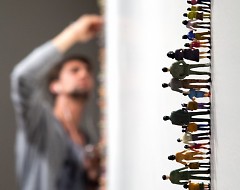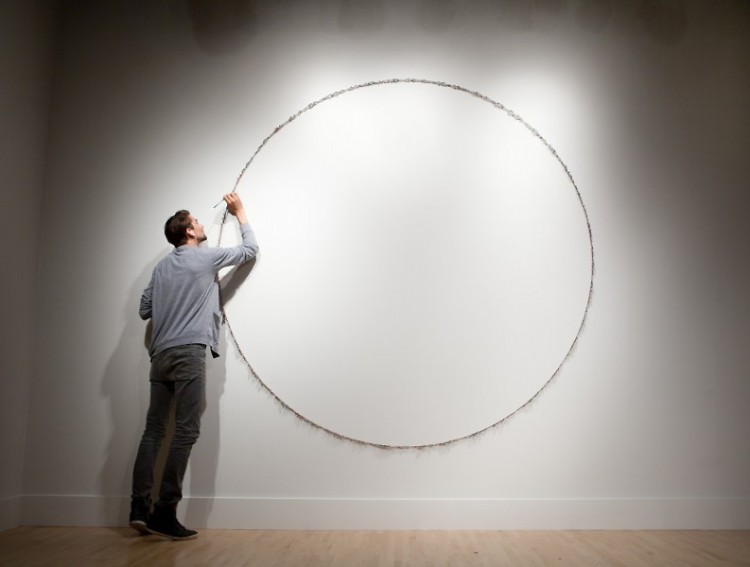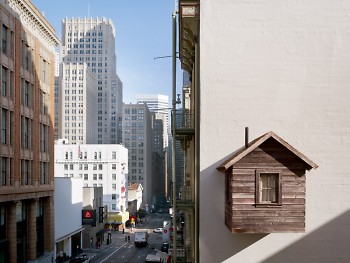Impart seeks to preface ArtPrize by asking artists essential questions about art.
Mark Reigelman is an artist based in Brooklyn who specializes in site-specific installations and public art. His work is significantly influenced by the site where he is installing, ultimately giving him a diverse body of work.
Reigelman's entry for ArtPrize, "Rainbow Gathering II (The Huddle)" can be viewed at Kendall College of Art and Design Monday through Saturday from 10 to 8 p.m. and from 10 to 6 p.m. on Sundays.
The piece discusses the equally exclusive and democratic nature of the contemporary art community in the form of a circle made out of 2,000 hand cast and hand painted plastic figures. The figures measure from ¼” to 2” in height and were individually glued to the gallery wall.
What is art?
"You begin with one of the most delicate questions in contemporary art. We are in a time where the usual standards of critiquing art no longer exist. A time where concept is king and things like composition, color and paint application sit on the sidelines. It's a tricky, scary place in the art world now. A hundred years ago there were very simple standards and you could put art on a hierarchy depending on these standards. Today, we are forced to stop thinking about art as beautiful paintings or sculptures and think about them as triggers for experiences. This allows art to take many shapes, utilize a multitude of materials and process and exist is a variety of locations all of which heighten the sensory experience for the viewer. The definition is inherently vague, just because the lines of contemporary art are extremely vague. If I had to answer you in one sentence I would say that art is: an intentional form of creative expression that triggers a sensory experience.
People can try to say, 'There is no bad art.' But there is bad, bad art. A lot of it. There's just a lot of bad art in the world. I think there's still kind of these inherent qualities of beauty people are attracted to. Not that everything has to be beautiful but there is these kind of structures that humans are drawn to."
What is the purpose of art?
"Our ability to utilize narrative and abstract thought is what makes humans so extraordinary and creates the foundation of artistic intent. The purpose of contemporary art, quite simply, is to convey a story or idea through creative and abstract means.
We come from a storytelling culture - that's what makes us unique. We tell stories to teach each other. With my work, I'm trying to tell some sort of story. And it's not important that everyone gets it because there are many layers to art. Contemporary art is very much about storytelling. Having a concept and explaining it through, for me, visual, abstract means. That story can be told through an infinite number of ways and mediums. That doesn't necessarily mean that the story is going to be told successfully, but the attempt of storytelling is important."
Is art important?
"Of course! It forces us to think, experience and communicate in new and dynamic ways. There is nothing more important in contemporary society!"
Why is art important?
"This is a great question to ask your audience. As you stroll down the street or drive to work consider the various forms of creative expression that you encounter and imagine the world without them. What a bore!"
The Rapidian, a program of the 501(c)3 nonprofit Community Media Center, relies on the community’s support to help cover the cost of training reporters and publishing content.
We need your help.
If each of our readers and content creators who values this community platform help support its creation and maintenance, The Rapidian can continue to educate and facilitate a conversation around issues for years to come.
Please support The Rapidian and make a contribution today.



